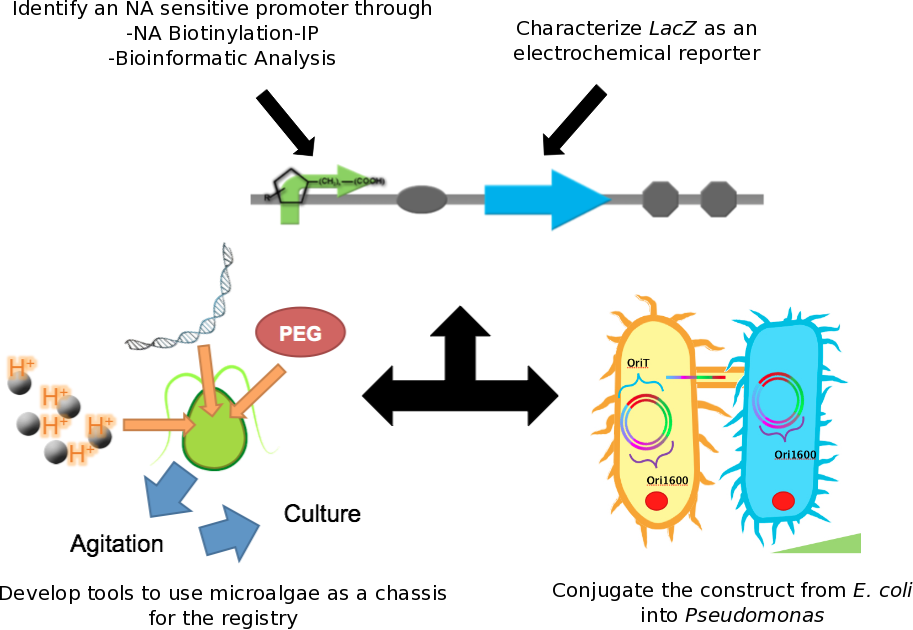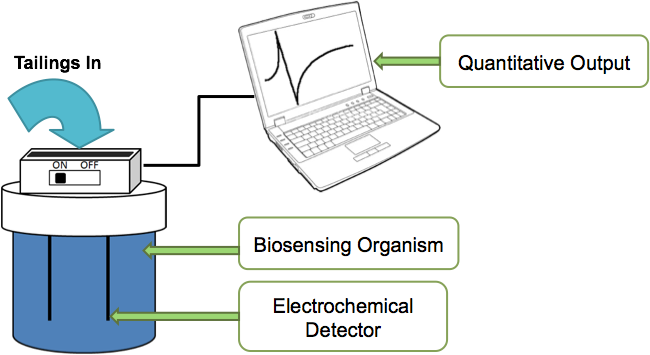Team:Calgary/Project/DataPage
From 2011.igem.org
(Difference between revisions)
Rpgguardian (Talk | contribs) |
Rpgguardian (Talk | contribs) |
||
| Line 8: | Line 8: | ||
</html>[[Image:UofC2011_DataPage1.png|thumb|600px|center|<b>Figure 1</b> In order to develop a naphthenic acid biosensor we were required to develop a sensory element which would respond specifically to this class of compounds. Additionally, we developed a novel electrochemical reporter system using the lacZ gene product Beta-galactosidase to detect and quantify the response of our promoter into a measurable system. Since <i>E. coli</i> is not naturally found in tailings ponds, we designed a novel conjugation system to transfer our reporter system into <i>Pseudomonas</i> as well as protocols for use of our system in microalgae.]]<html> | </html>[[Image:UofC2011_DataPage1.png|thumb|600px|center|<b>Figure 1</b> In order to develop a naphthenic acid biosensor we were required to develop a sensory element which would respond specifically to this class of compounds. Additionally, we developed a novel electrochemical reporter system using the lacZ gene product Beta-galactosidase to detect and quantify the response of our promoter into a measurable system. Since <i>E. coli</i> is not naturally found in tailings ponds, we designed a novel conjugation system to transfer our reporter system into <i>Pseudomonas</i> as well as protocols for use of our system in microalgae.]]<html> | ||
| - | + | </html>[[Image:UofC2011_VisionSlide.png|thumb|600px|center|<b>Figure 2</b> Our vision was to use our construct in a device which could be used to quantitate the amount of naphthenic acids in a tailings pond solution. A sample would be loaded into the device, the bacteria would respond to the naphthenic acids in solution and produce an electrochemical output. This could be quantitatively measured and the output graphed onto a computer.]]<html> | |
</html> | </html> | ||
}} | }} | ||
Revision as of 21:28, 28 September 2011









Building a Naphthenic Acid Biosensor

The Design

Figure 1 In order to develop a naphthenic acid biosensor we were required to develop a sensory element which would respond specifically to this class of compounds. Additionally, we developed a novel electrochemical reporter system using the lacZ gene product Beta-galactosidase to detect and quantify the response of our promoter into a measurable system. Since E. coli is not naturally found in tailings ponds, we designed a novel conjugation system to transfer our reporter system into Pseudomonas as well as protocols for use of our system in microalgae.

Figure 2 Our vision was to use our construct in a device which could be used to quantitate the amount of naphthenic acids in a tailings pond solution. A sample would be loaded into the device, the bacteria would respond to the naphthenic acids in solution and produce an electrochemical output. This could be quantitatively measured and the output graphed onto a computer.

 "
"






